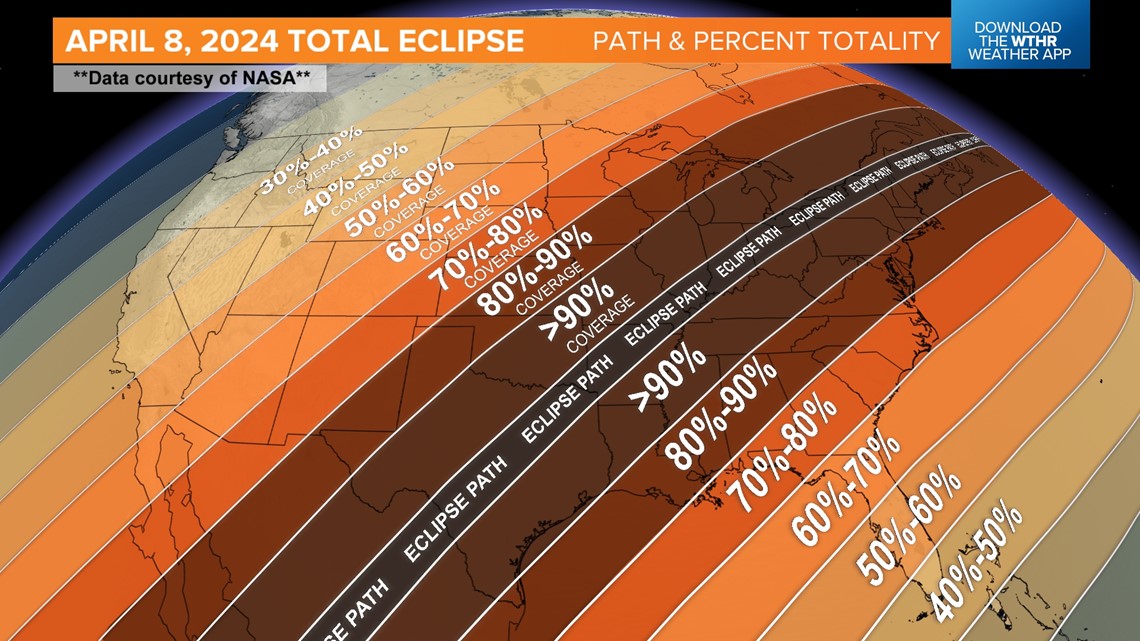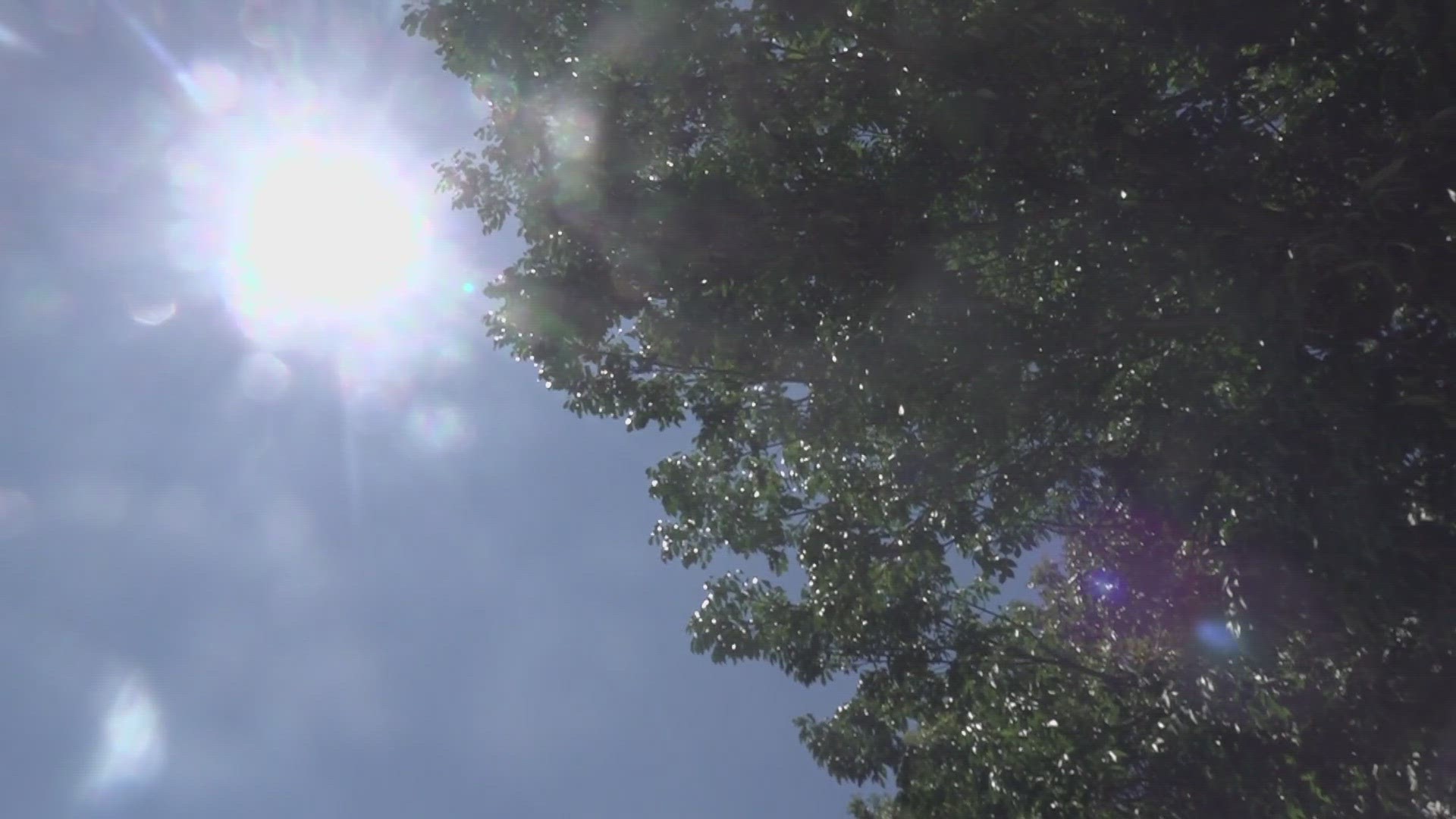INDIANAPOLIS — If you’re enjoying time outside this Labor Day weekend, make sure to keep an eye peeled to the sky - a clear view of the sun in your backyard will mean you’ll likely get a stellar view of the highly anticipated total solar eclipse once it comes around in April 2024.
Around 3 p.m. throughout the next three to four days, the sun will move along the same path as it will during the next total solar eclipse. If a building or tree is in your way around 3 p.m. this weekend, your view of the eclipse could be blocked.
“It's a good time to go scope out locations, things like that. Make sure you don't have any trees in the way. Claim your spot and have a good view of the eclipse,” said astronomer Brian Murphy, who is the director for the Holcomb Observatory and Planetarium at Butler University.
Murphy remembers seeing tears stream down people’s faces as sunlight faded into resplendent darkness under our moon's shadow during the Great American Eclipse in 2017. Although it's only been a few years since then, Murphy believes eclipses are the most dazzling astrological phenomenon a person can experience in their lifetime, mostly because they are so rare.
The chance of seeing one in any location on the Earth is once every 400 years. The last total solar eclipse over Indianapolis was over 800 years ago.


“Get yourself in the path of totality. Because even if the sun is 99.9% eclipse, it's not a total eclipse. And it's a completely different beast with a total solar eclipse. It's just amazing what you see compared to the partial. So, we always tell people, even if you're only getting 30 seconds of a total eclipse, go see it. Get yourself that 10 miles you need to go once you're in there,” Murphy said.
A total solar eclipse happens when the moon passes between the Earth and the sun, and completely blocks out the face of the sun. The event will begin with a partial eclipse that makes the sun resemble a crescent, and can last 70 to 80 minutes, according to NASA. As the moon starts to cross in front of the sun, undulating lines of light called shadow bands can be seen.
Those in the path of totality can then expect to experience a rapidly darkening world as a cascade of shadow coming in from the west unfurls over the Earth's surface at more than 2,000 miles an hour. Animals respond to the sudden night - crickets hum while birds fall silent, a phenomenon that will occur even if the sun is not shining brightly.
"Even if it's not a perfectly sunny day, we'll still feel the effects. It will be looking like a very bad storm coming in if it's cloudy, but the storm isn't coming. But, we do hope we have clear weather," Murphy said.
Balls of light visible around the moon's edge called Bailey's Beads can also be seen, flickering on and off until a single point of light remains. That's called the Diamond Ring effect, when the sun's rays appear around the moon as a single, stunning burst of light.


Then totality begins, with the moon covering the sun's surface. At that point we'll only see the sun's corona and the sky will darken more. If solar activity is particularly strong, the corona will blast along all sides of the moon. Weak solar activity will cause them to follow the sun's magnetic path. The moon will soon leaves the face of the sun and the disc becomes visible once more.
While Indianapolis and much of central Indiana will be in the path of totality, people in certain towns may need to make a short trip to another neighborhood to be in the full path of totality.
The south side of Kokomo, for example, will likely experience around 30 seconds of totality, but the north side will experience none. Anywhere that will experience 0% path of totality will experience the cool effects from an eclipse.
"You don't have to get right on the center to get most of the totality. In fact, you avoid a lot of the crowd that way," Murphy said.
The 2024 solar eclipse will cross North America, passing over Mexico and Canada. Mexico’s Pacific Coast is expected to be the first point in continental North America that will experience totality, around 11:07 a.m. From there, it is projected to trace through several states across the country, Indiana included.
We'll have a bit of a sneak peek later this fall. On Saturday, October 14, 2023 an annual solar eclipse will be experienced in the U.S. from Oregon to Texas, and all of North America will experience at least a partial solar eclipse.

